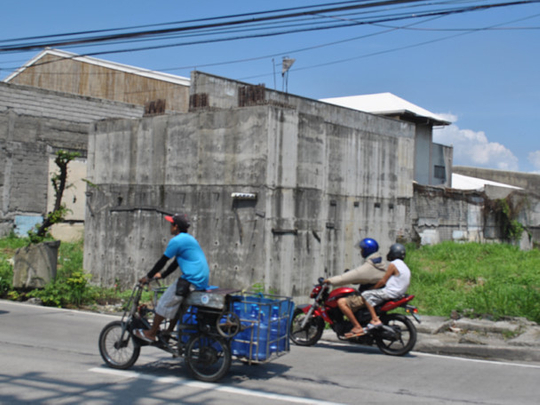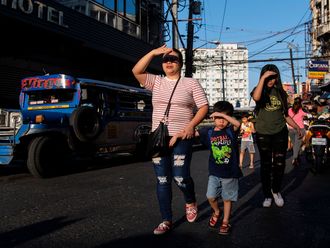
Manila
In the village of Acacia in Metro Manila’s western suburb of Malabon, concrete pillars stand covered in vegetation at a crossroad where an overhead railway was supposed to have been built more than a decade ago.
Roughly 35 kilometres away in Malolos in Bulacan, similar huge structures stand — unfinished unused since they were placed by engineers of a China-based construction firm.
“It would have been a big help for the economy of Malolos and other municipalities where the railroad track was supposed to have passed through had the train project pushed through,” Willy Quitlong, a resident of Dreamcrest Homes subdivision told Gulf News.
Quitlong was one of the few Filipinos in Central Luzon who purchased land and built a house at Dreamcrest, a low-cost, mid-range housing project. He was banking on his investment bearing fruit when the railway project pushed through. He brought land in 1998 but today, 16 years later, he is left ruing his decision.
Aside from Dreamcrest, other housing projects in Malolos and areas close to the railway in Bulacan province such as Marilao, Meycauayan, Guiguinto among others also ended up meeting the same fate.
Seeming boomtown
Once a seeming boomtown with many houses mushrooming, Dreamcrest now looks more like a ghost town — a stark reminder of unfulfilled promises.
Like the solitary pillar in Acacia, several dozen kilometres to the North, some of the homes have already been abandoned and stand mute testimony to an unconsummated pledge made by the past administration of a quicker and comfortable daily travel between Manila and the provinces north of it.
Sometime in 2002, President Gloria Macapagal-Arroyo came up with a plan to decentralise urbanisation from Manila by developing growth areas outside of the national capital region. The metropolis is already bursting at the seams with overpopulation and government services are already overburdened. The idea was to spread development to nearby areas by providing a rail network that could regularly transport commuters between Manila and the northern provinces. Towards this end, economic planners looked at developing cities like Malolos and later on, Clarkfield in Pampanga further in the north.
The Arroyo government came out with plans to revive a railway that had been in use between Caloocan City and Malolos until the early 1990s.
By 2003, the government had already contracted the China National Machinery and Equipment Corporation (CNMEC) for construction of an 80-kilometre railway line — the so-called North Railway Project — linking Caloocan to Malolos and Clarkfield,
The original cost of the contract was $421 million (Dh1.55 billion). The project was funded by a government loan of $400 million from China’s Exim Bank and the balance to be sourced from the Development Bank of the Philippines.
In 2009, CNMEC increased the contract price to $593 million, with the government agreeing to shoulder the extra cost.
In 2011, President Benigno Aquino III’s government decided to scrap the project even though a considerable portion of the infrastructure such as concrete girds for the elevated tracks were already put up. The project was discontinued after legal questions and allegations of corruption..
Who’s going to pay?
Several years after the project was launched, the railway stands idle and unused, a white elephant that fell victim to disputes in government. “The sad part is that no want wants to pay for this fiasco,” Senator Francis Escudero said during a senate probe into the botched railway deal.
Escudero wants the government to run after those responsible for the project, which has already cost the government $180 million on top of the $50 million in outstanding loan or a total of P9 billion (Dh735 million).









